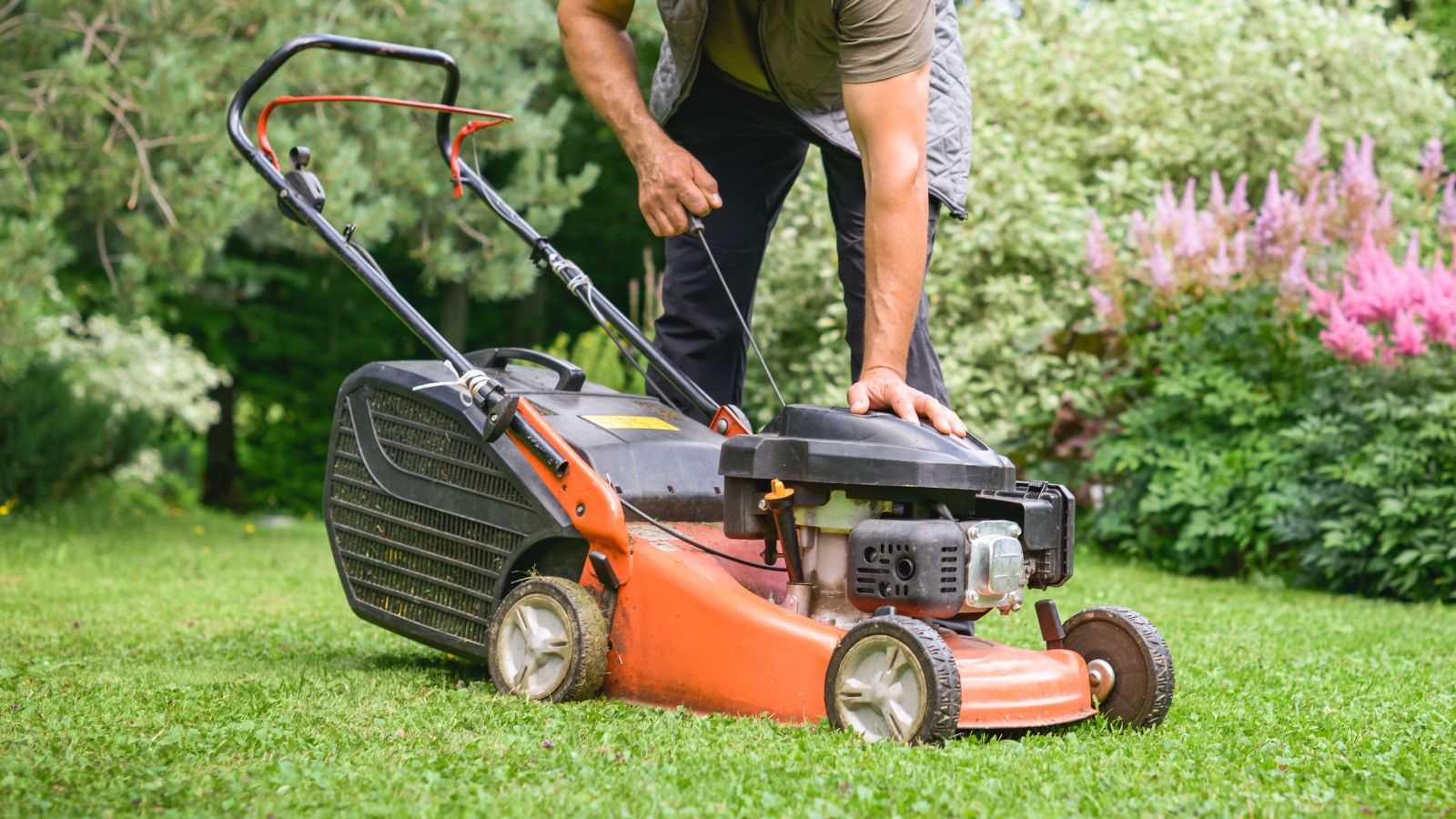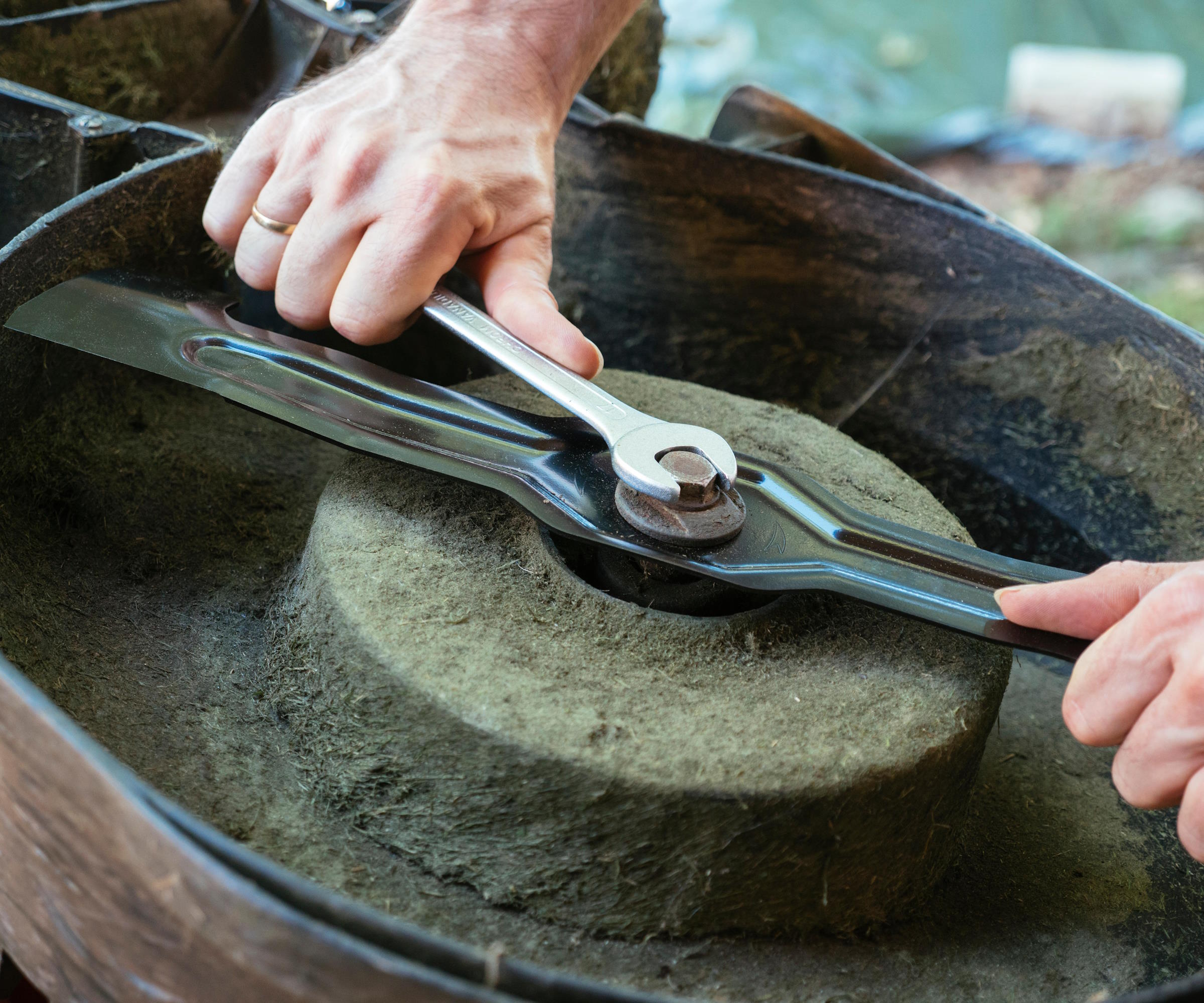What to do when your lawnmower pull cord is stuck – 5 simple fixes
I spoke to experts about what to do when your lawnmower pull cord is stuck. Follow these five quick fixes to get yours working again


There are few things as frustrating as a stuck pull cord on your mower. You have an afternoon's mowing to come, but when you pull on the cord, nothing happens.
Thankfully, this is a relatively simple fix. There are a few things that could have gone wrong, but all of them are straightforward to solve. You need some DIY skills, but it's nothing too technical or difficult.
I've tried out plenty of the best lawnmowers over the years, so I know exactly how to fix them when things go wrong. I have also spoken to a collection of landscaping and mower experts to get their advice on how best to fix a stuck lawnmower pull cord.
Method 1: Check the blades

The first thing to do is to check the blades. It's an easy thing to overlook, but sometimes rocks, sticks, old grass, or even the debris shield from the mower itself can gum up the blades and stop them from turning. Tool expert Clint DeBoer told me that 'there could be grass or debris stuck to the underside of the mower. This could restrict the drive shaft, and therefore prevent the blade from turning.'
To check this, disconnect the spark plug – so the lawnmower won't switch on as you work – and flip over the mower. Check around the blades for obstacles that might stop them from turning. Remove any rocks or dirt, replace the spark plug, and see if the mower will start.
Rocking the blades can fix the problem even if they aren't stuck on anything. Landscaping expert Mark Bradley says that 'sometimes gently rocking the blade (with gloves on and the spark plug disconnected) can free up a mildly seized engine'
Method 2: Lubricant
If there isn't anything blocking the blades, sometimes the problem is as straightforward as lubrication. An old cord might just be getting stuck on old parts, so for a quick fix, try spraying the cord with a lubricant, such as WD-40, like this from Walmart. It won't work every time, but it's a good first step before you get into more serious DIY.
Method 3: Fixing Hydrolocking

Another issue could be hydrolocking. It sounds a little high-tech if you haven't dealt with it before, but it's easy to check. If you store your mower on its side for too long or flip it onto the wrong side, engine oil can pool in the spark plug, so the motor won't turn over. This is called hydrolocking. To diagnose this, take out the spark plug and feel the end. If it's damp, the spark plug is hydrolocked.
Set the spark plug on a rag to dry. Then, put a rag in front of the spark plug socket and pull the mower cord a few times. This should remove some of the oil that's pooled in the socket. Let the mower dry out for a couple of hours. Once everything is dry, replace the spark plug and see if the engine starts.
Method 4: Check the cord
Once the blades and lubrication are ruled out, it's time to try some mechanical fixes.
Mark Bradley, told me that, 'a stuck cord often results from a jam in the recoil spring system, which is responsible for retracting the cord'. Your pull cord might not even be stuck. It might feel stuck, but it could be that you simply aren't getting any grip on it. Clint DeBoer, also adds, 'the issue could also be caused by the cord being too slack'.
Whatever the issue, you need to look at the recoil mechanism. Mark says 'If the issue is a tangled cord, carefully disassemble the recoil starter to access, untangle, or realign the cord'. First, remove the plastic cover, and then unscrew the recoil starter. Untie and retie the pull cord, making sure that it feeds back into the spool tightly.
Mark adds that 'when installing the new cord, wind it onto the pulley in the correct direction and ensure that it's properly tensioned – this is crucial for effective operation'.
It may be the case that the cord has broken inside, so you may need a replacement pull cord, like this Briggs & Stratton starter rope from Amazon. Refit the recoil mechanism and the plastic cover and see if this fixes the mower.
Method 5: Starter assembly
When you're checking the cord, make sure you take a look at the rest of the starter mechanism. Gardens and construction expert, Rafi Friedman told me that 'the issue is almost always a rusted starter'.
The good news is that you can fix this yourself without having to get your mower serviced, but it's a little convoluted if you don't have great DIY skills. First, as ever, disconnect the spark plug so that your mower doesn't start on accident.
Rafi says that you should then take off the housing for the starter mechanism. This is pretty easy; you just need to remove a few screws. You can then take off the starter mechanism and take a look inside.
'When you do this, you'll probably see some rust on the ball bearings inside. You'll want to use fine steel wool to scrape the rust off, then add some oil to the center of the starter assembly', says Rafi. 'After that, you should re-wind the spring and screw everything back together'.
Once everything is reassembled, replace the spark plug and try pulling the cord.
FAQs
Are lawn mower pull cords universal?
Pull cords aren't universal, but it almost doesn't matter. Almost every pull cords will fit every mowers. However, it always pays off to measure, because a pull cord that's too thin is more liable to break.
What are pull cords made from?
These days, pull cords are almost always made from polyester rope. If you're fitting a new pull cord, this is helpful, because you can melt the end of the rope with a lighter to stop it from from fraying.
For more mower maintenance advice, we also explore in our dedicated features, why won't my lawn mower start and how to sharpen lawn mower blades.
Sign up to the Homes & Gardens newsletter
Design expertise in your inbox – from inspiring decorating ideas and beautiful celebrity homes to practical gardening advice and shopping round-ups.

As a gardens and lifestyle contributor, Alex makes sure readers find the right information to help them make the best purchase. Alex got his start in reviewing at the iconic Good Housekeeping Institute, testing a wide range of household products and appliances. He then moved to BBC Gardeners’ World Magazine, assessing gardening tools, machinery, and wildlife products.
-
 Kylie Jenner, Tommy Hilfiger, and Lenny Kravitz transform their homes with prints – the London Original Print Fair Director has a method that makes their look 'accessible and affordable' in your home
Kylie Jenner, Tommy Hilfiger, and Lenny Kravitz transform their homes with prints – the London Original Print Fair Director has a method that makes their look 'accessible and affordable' in your homeCelebrities from the Kardashians to Lenny Kravitz decorate their homes with prints by famous artists, and it's easier to recreate than you might expect
By Sophie Edwards
-
 ‘Completion days’ are the answer to laundry doom piles, pro organizer claims – here’s how this hack can instantly stop fresh laundry from piling up once and for all
‘Completion days’ are the answer to laundry doom piles, pro organizer claims – here’s how this hack can instantly stop fresh laundry from piling up once and for allStay on top of your laundry with the 'Completion days' method
By Chiana Dickson